2017 Mazda MX-5 Miata RF Review: First Drive


CARS.COM — It’s no secret that car journalists are very fond of the Mazda MX-5 Miata. I own one, which makes me a fan. But it also makes me painfully aware of its shortcomings, mostly having to do with noise and size.
There isn’t much the retractable fastback version of the 2017 Mazda MX-5 Miata can do about the size portion; small will always be small. But perhaps it can do something about the noise and smooth out a few of the roadster’s other rough edges.
Related: 2017 Mazda MX-5 Miata RF Retractable Hardtop Photo Gallery
“RF” alludes not only to the hardtop but also to the significant styling change to the Miata’s rear half. Instead of the sloped cloth top and rear glass forming the rear of the cabin’s profile, the pillars reach back to give the Miata RF a distinctive look.
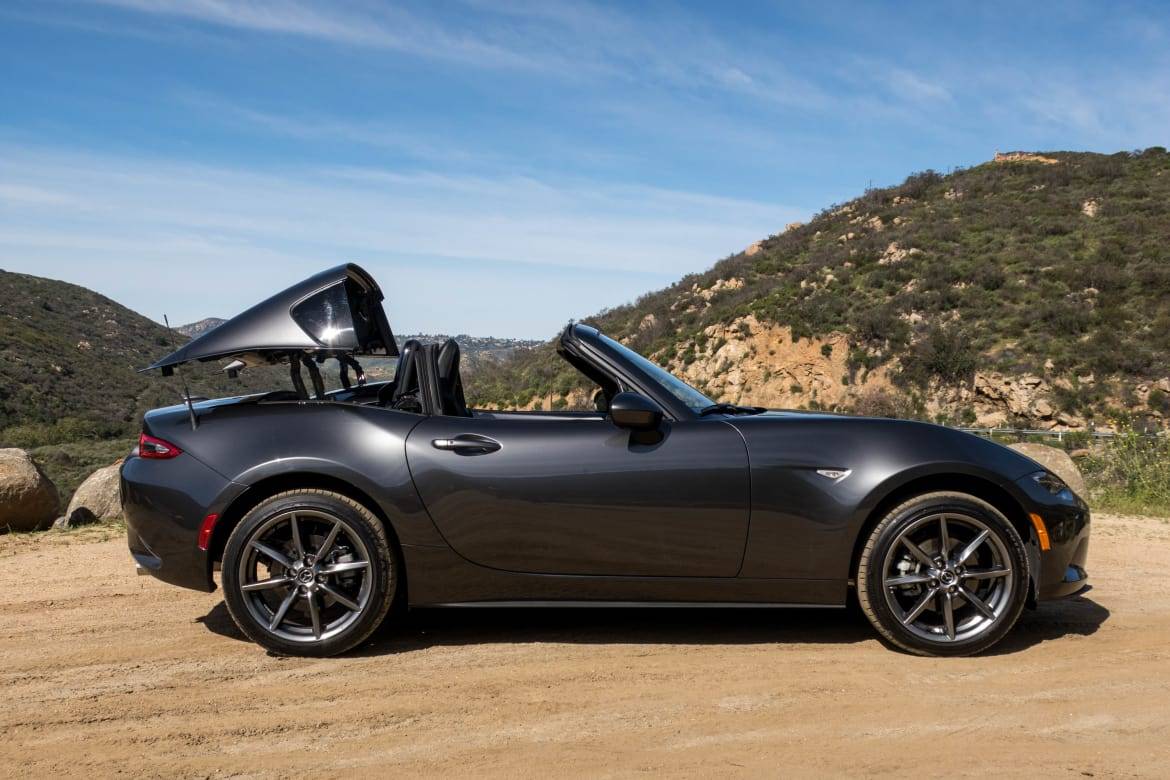
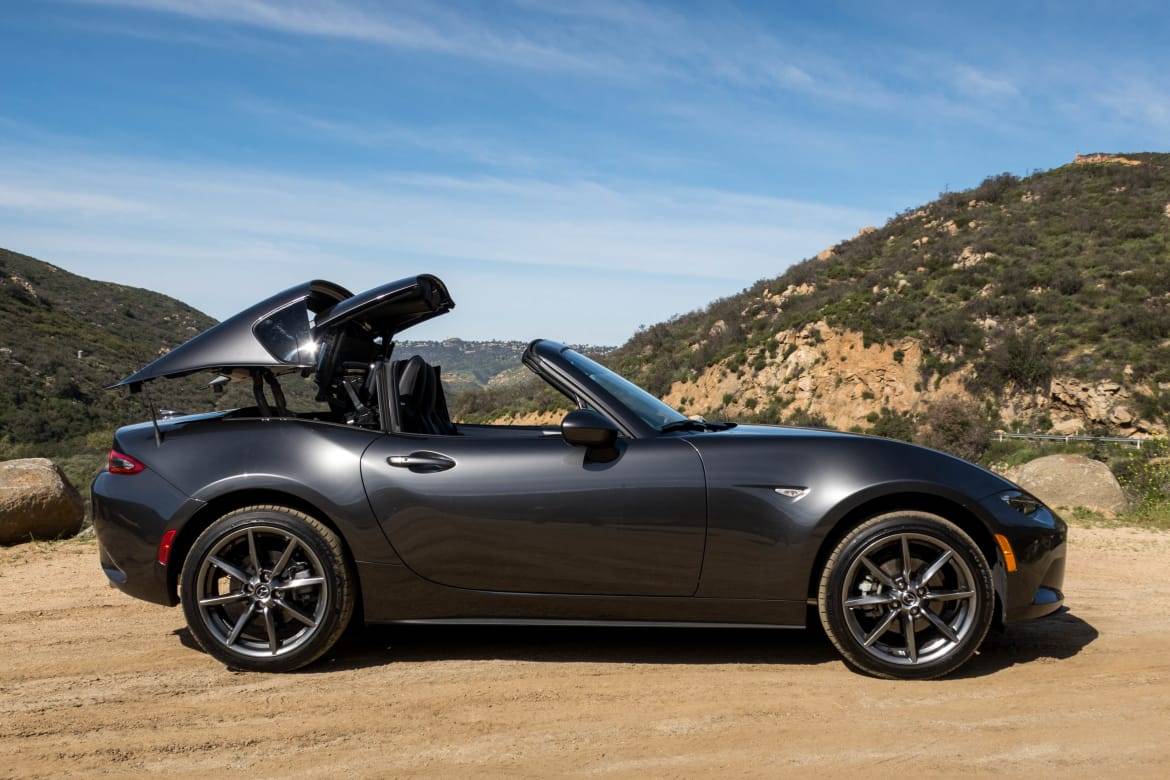

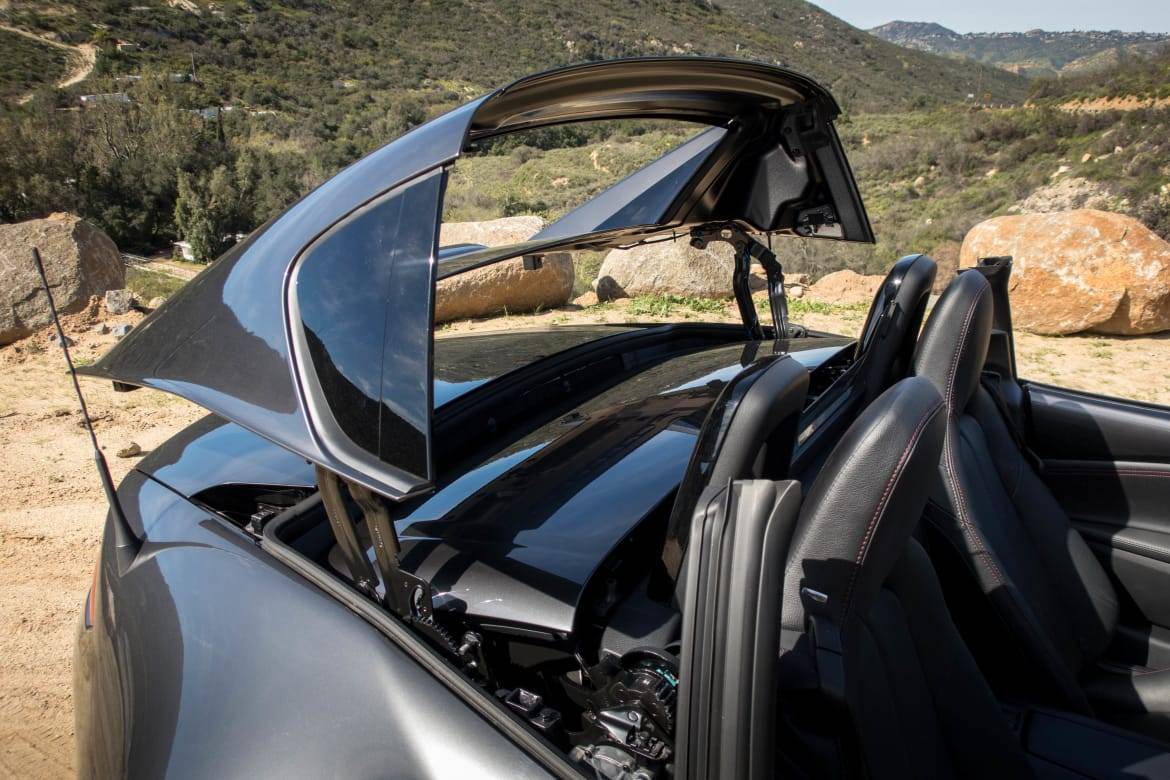
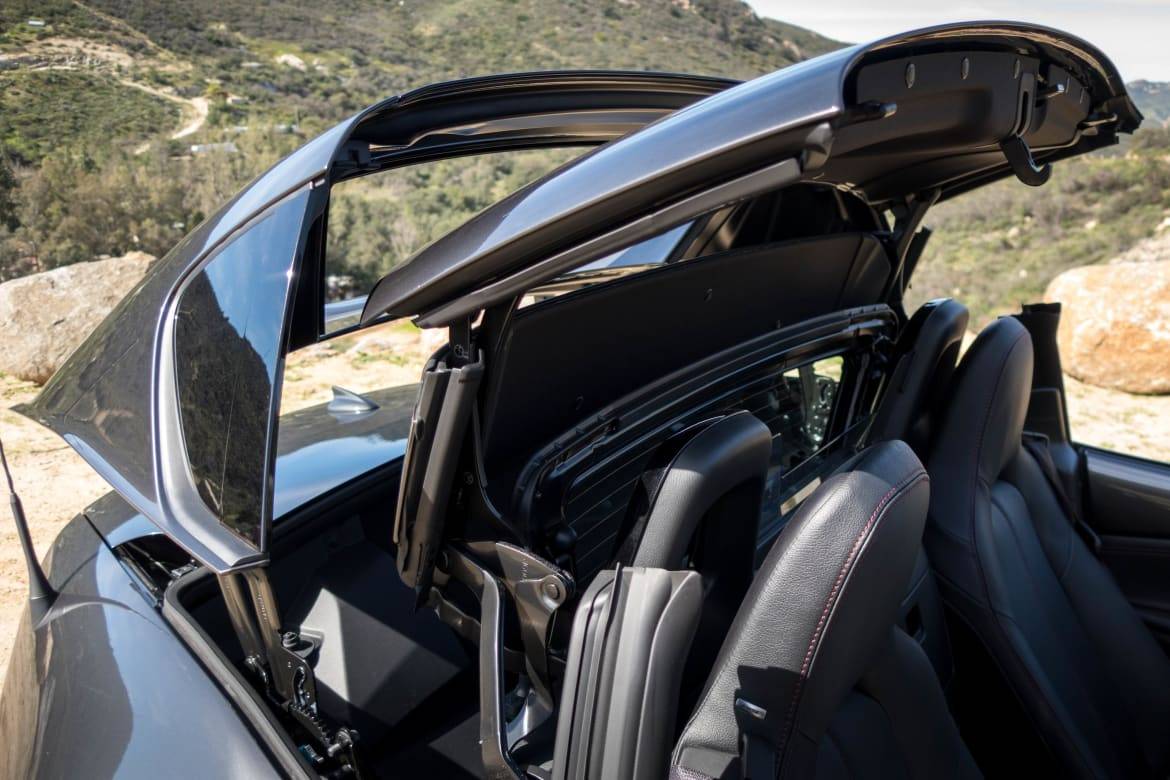
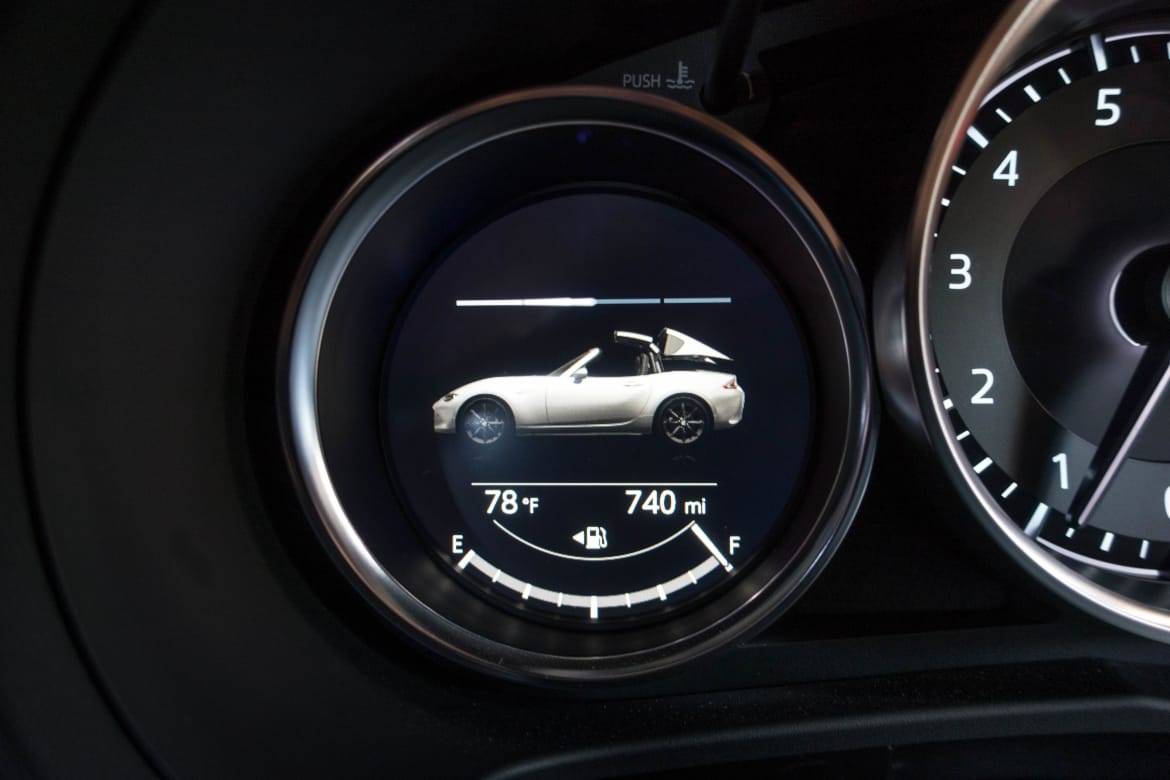










Speaking of the top, it’s actually split into two pieces: The rear pillars form one, and the other consists of the rear window and the top portion of the roof. The dance that the roof does to fold is a sight to behold, lifting the entire rear section of the roof and tucking the middle underneath itself. What makes the Miata RF’s top different from other convertibles with removable roof panels (Porsche calls them Targas) is that when the top is stowed, the rear glass folds down with it, adding to the open-air feel. (Does anyone remember the Honda Del Sol from the ’90s?)
The top raises and lowers in 13 seconds, at speeds of up to 6 mph. Why that speed? Mazda says its engineers figured out that at speeds higher than that, hair can be blown backward, and those with long hair might find it trapped in the mechanism. So, 6 mph it is.
One subtle change to the Miata RF makes it much more enjoyable with the top down — a clear plastic deflector that’s nestled between the two seats. There’s just enough wind rolling through to give the sensation of speed that makes convertibles appealing, but the air doesn’t slice through the occupant area like a mini-hurricane. Even after driving with the top down for an hour or so, my hair still appeared presentable instead of looking like I got an ill-advised blowout.
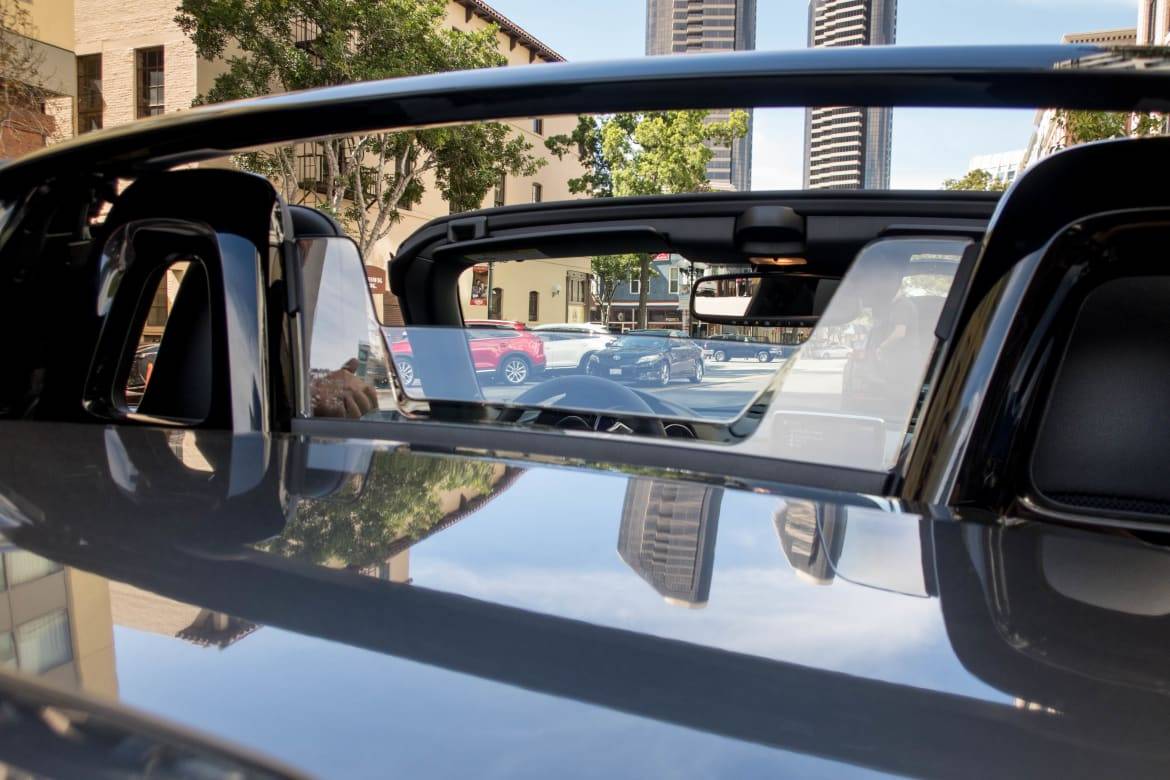
Keeping the side windows up to make it less turbulent, a technique that used to work with the soft-top Miata, doesn’t work as well with the RF. If the windows come up, the rear pillar catches some of the air and creates a buffeting effect over the driver’s left shoulder that quickly gets annoying. But even with the windows down, the cabin is still devoid of turbulence so that will be the way to go.
With the top up, things are quieter inside. It’s not as quiet as a real roof, and the Miata RF still isn’t the easiest car to have a conversation in, but it won’t require driver and passenger to yell. Along with the hard top, Mazda says that the seals on the doors have been buffed up, and there is a sound-absorbing headliner in the roof to keep wind and road noise out. It works.
Apart from the hard top and styling, the Miata RF is for the most part untouched. The interior is identical plus a button on the center console to operate the top and a small color display on the instrument panel that shows the top at various stages of operation. Dimensionally, the Miata RF adds 5 millimeters of height but is otherwise unchanged, and with the way the top folds, cargo room (however little) is functionally the same as well. The last change is a new paint color — Machine Gray Metallic, shown in the photos accompanying this article.
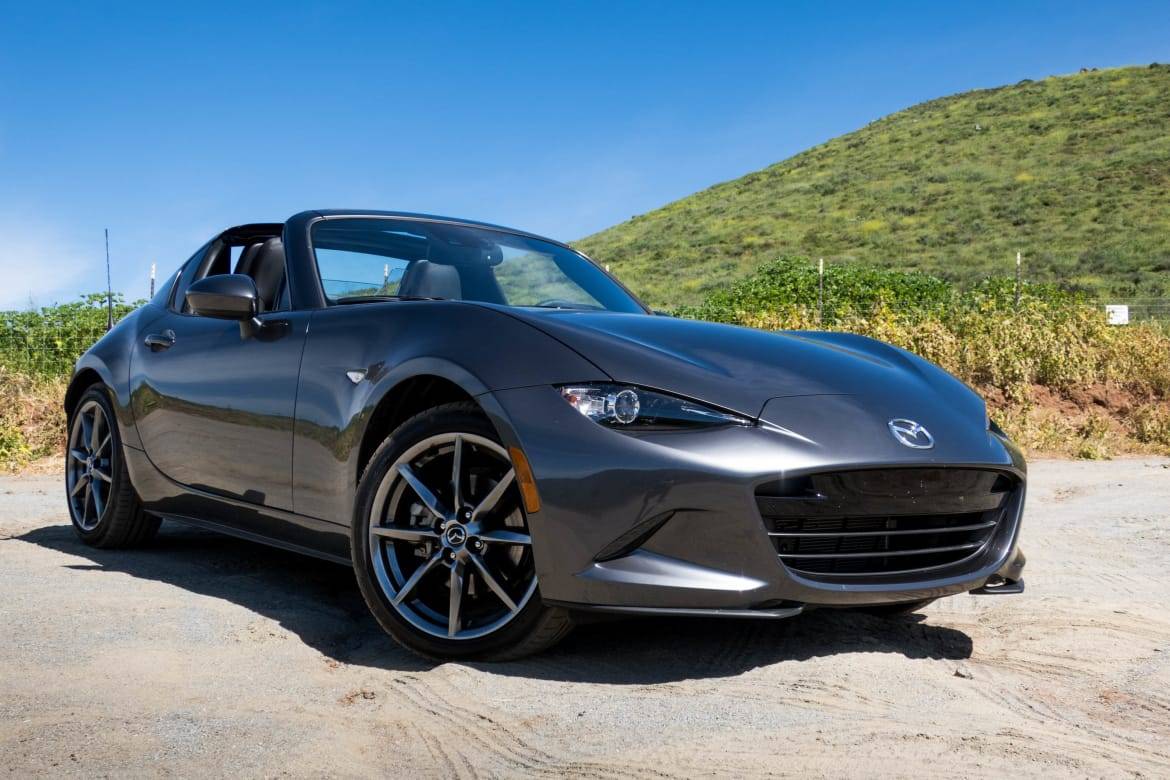
Under the hood, the Miata RF has the same 2.0-liter four-cylinder engine that makes 155 horsepower and 148 pounds-feet of torque. Six-speed automatic and manual transmissions are available, and I wholeheartedly recommend the manual; nobody makes manuals like Mazda does. Fuel economy figures match the soft-top: 26/33/29 mpg city/highway/combined with the manual and 26/35/29 mpg for the automatic.
I wondered if the added 113 pounds of weight from the opening/closing mechanism and the roof itself would change how the RF drives. Mazda says it retuned the suspension to compensate for the added weight and revised the rear suspension to make it more balanced at the limit. The steering was tweaked slightly to add a bit more weight.
I spent the morning in a version with the manual transmission and I was happy to find that it still drives like a Miata. Balance is spot on, I liked the added steering heft and the extra weight isn’t a hindrance. The Miata isn’t fast to begin with, but there was no noticeable decline in acceleration with the RF — you’ll still have to work hard to keep it in the powerband, which adds to the fun or the challenge depending on how you look at it.
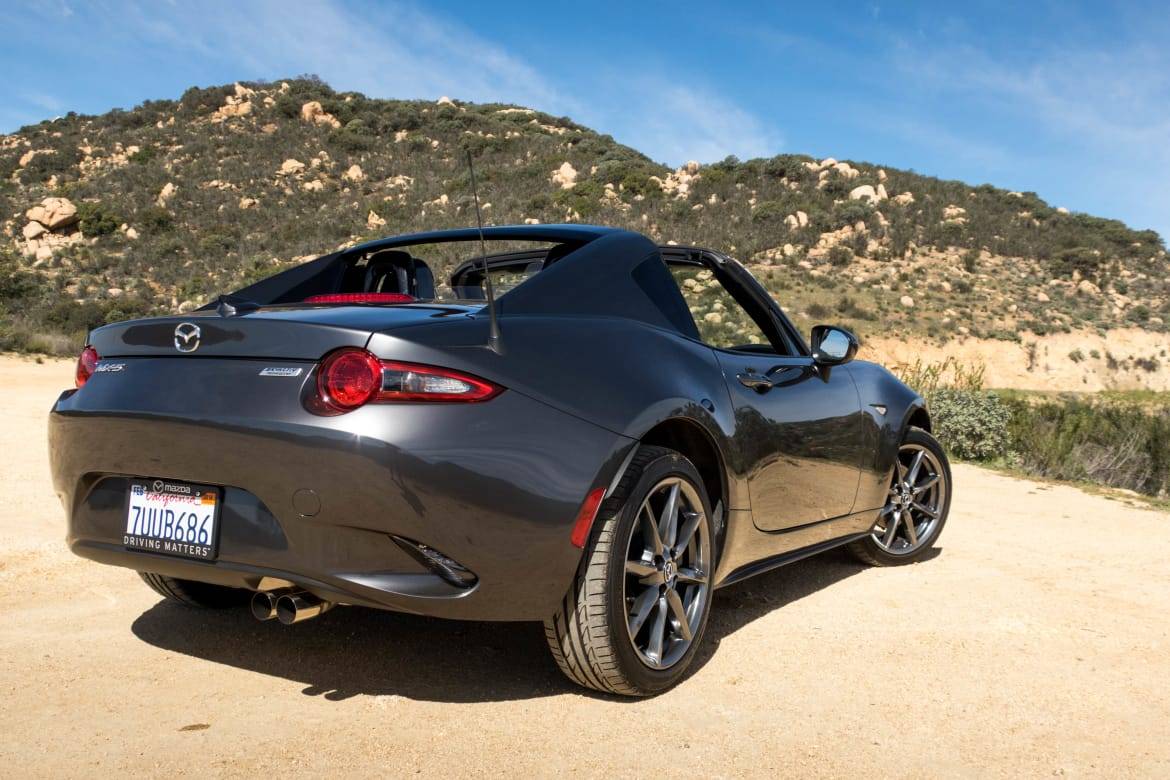
I can think of only one real drawback to the RF — visibility. With the top up, the Miata has always had a giant blind spot over the driver’s right shoulder that could be eliminated by lowering the top. But since those pillars stay up even with the top down, it’s still hard to see, so positioning the driver’s side mirror correctly will be important for safety.
The Miata RF is offered only in Club and Grand Touring trim levels. The Club starts at $32,390 with the six-speed manual or $33,120 for the automatic, while the Grand Touring begins at $33,455 with the manual and jumps to $34,660 with the automatic; all prices include destination. That represents a $2,715 premium for the Club and a $2,515 markup for the Grand Touring compared with the soft-top.
Mazda thinks that 60 percent of Miatas sold will be of the RF variety, and given the price premium, I thought at first that the projection was a tad ambitious. But after driving it, I can see where they’re coming from. It feels like an improvement in every way — the same performance but quieter inside and much better looking. A Miata with some of its edges smoothed is a beautiful thing. It’s no longer a diamond in the rough — it is polished and ready, and it’s the one I’d buy in a heartbeat.
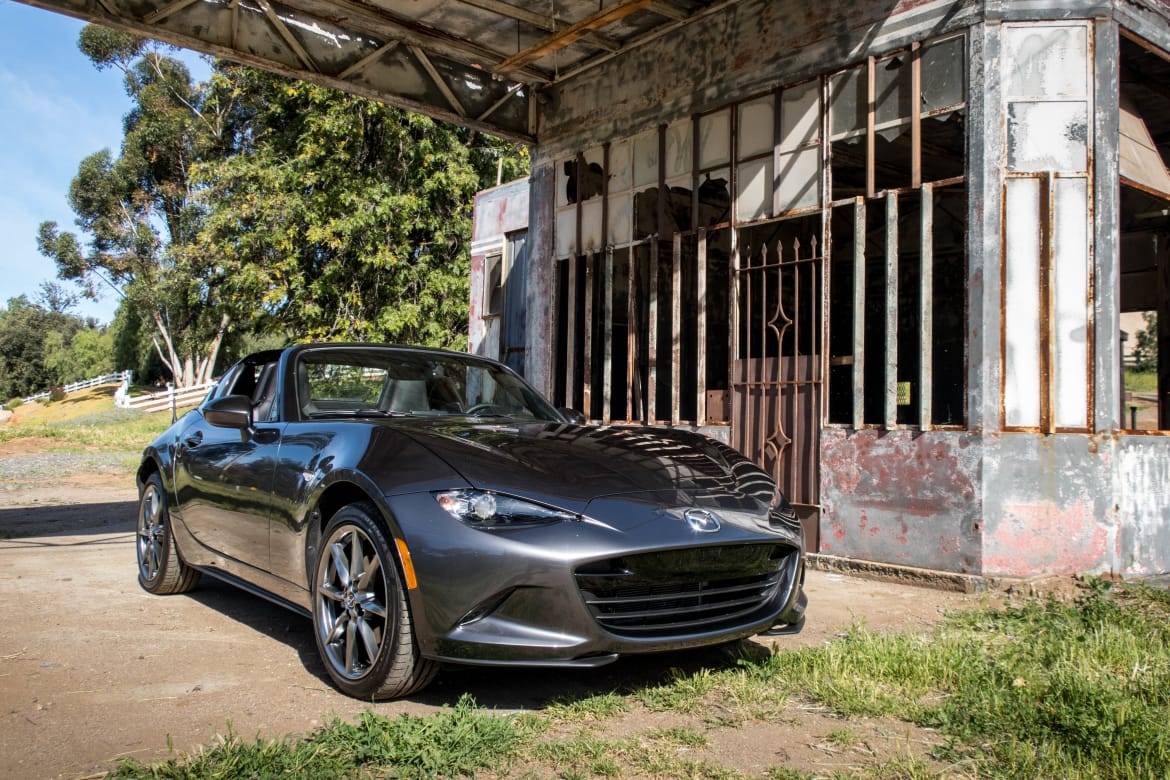
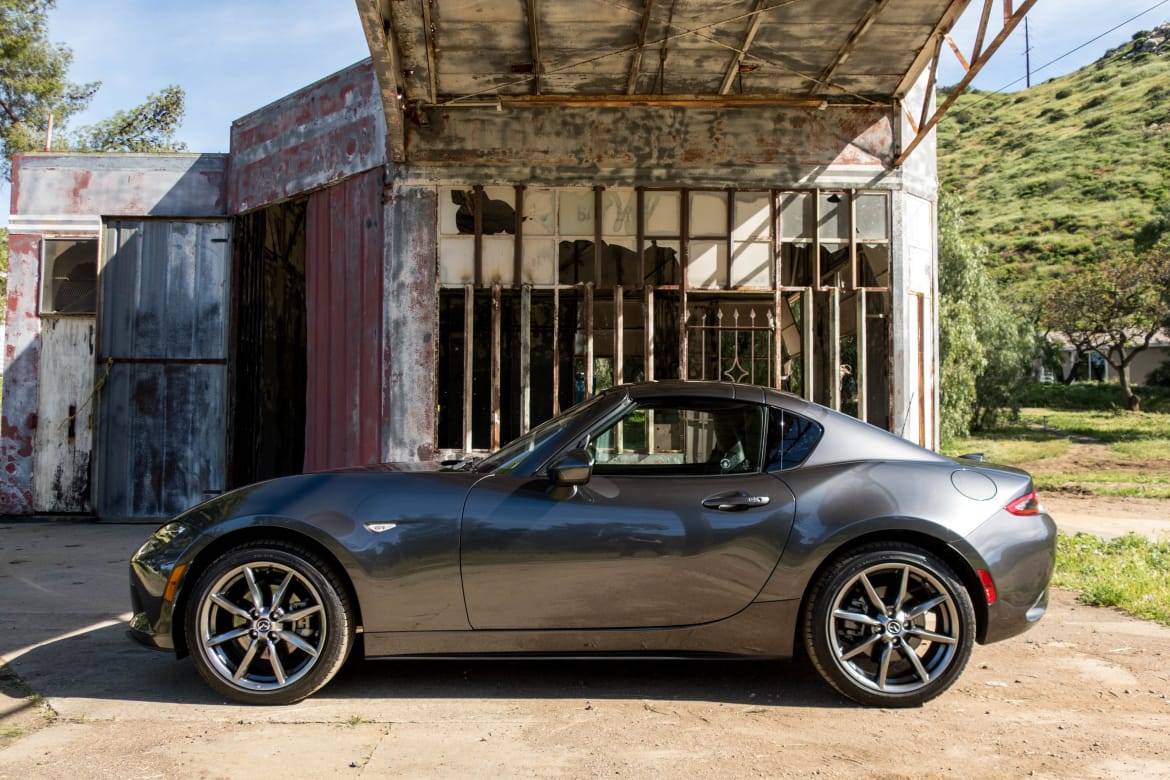
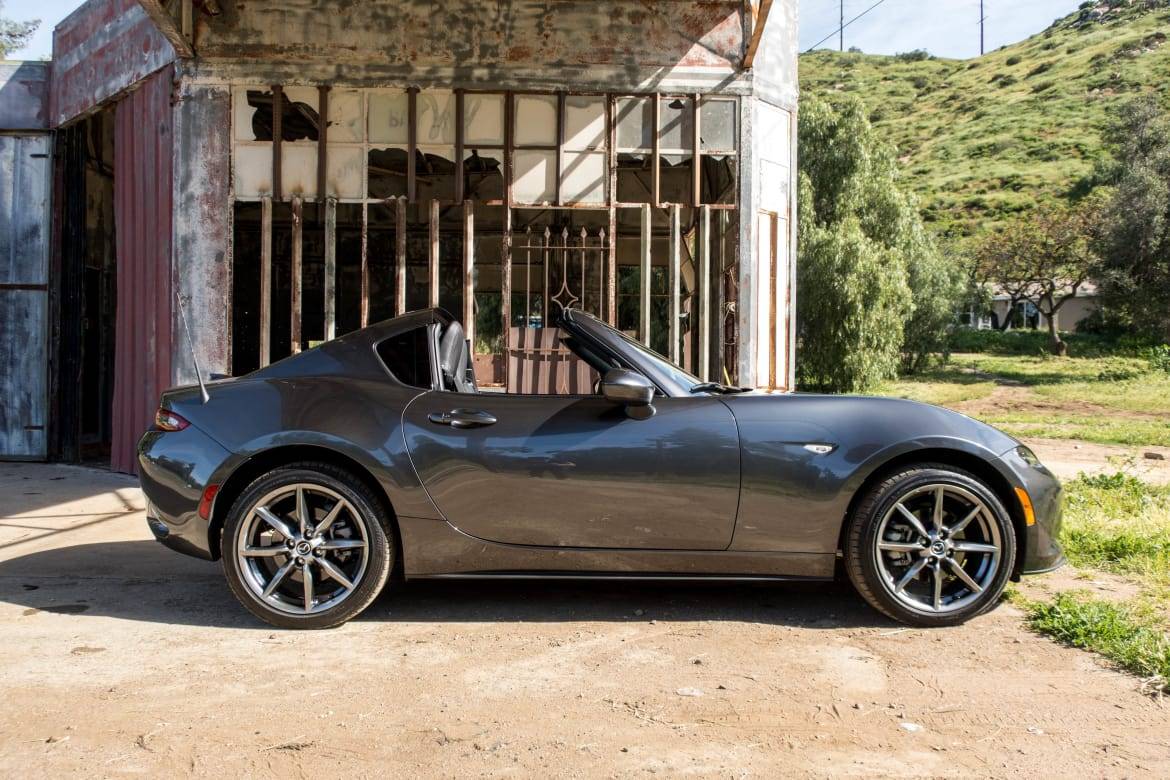
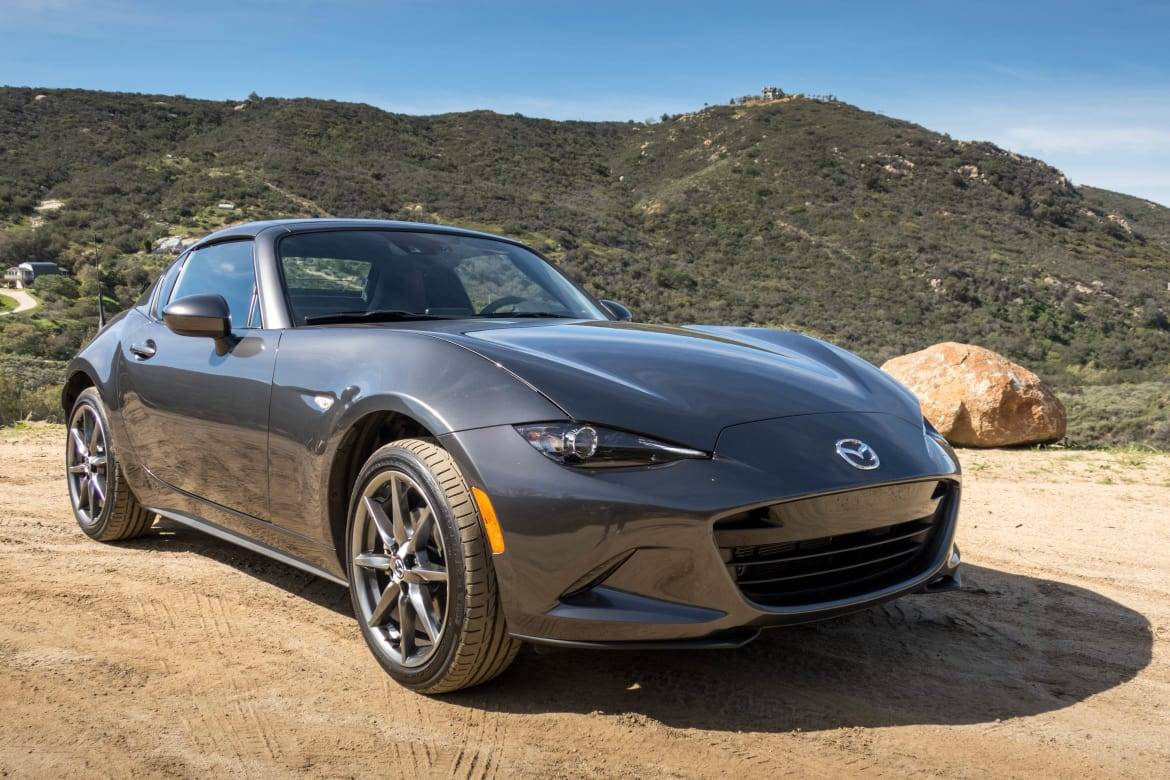
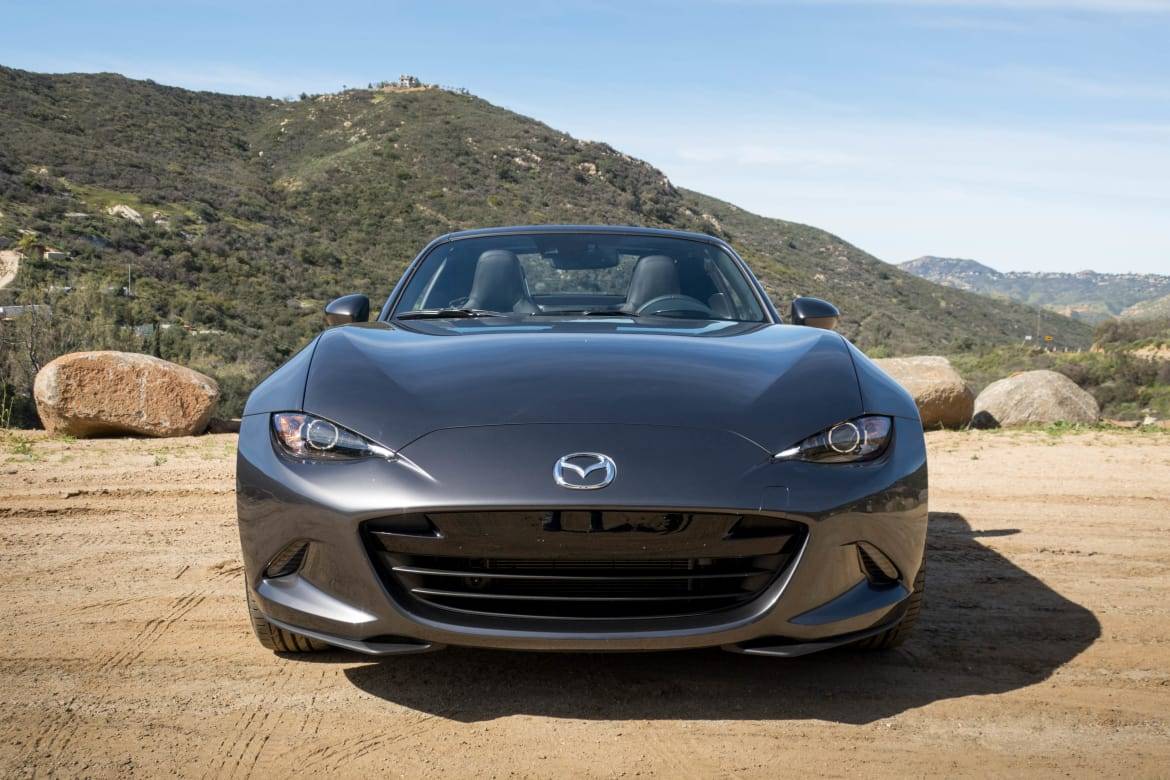
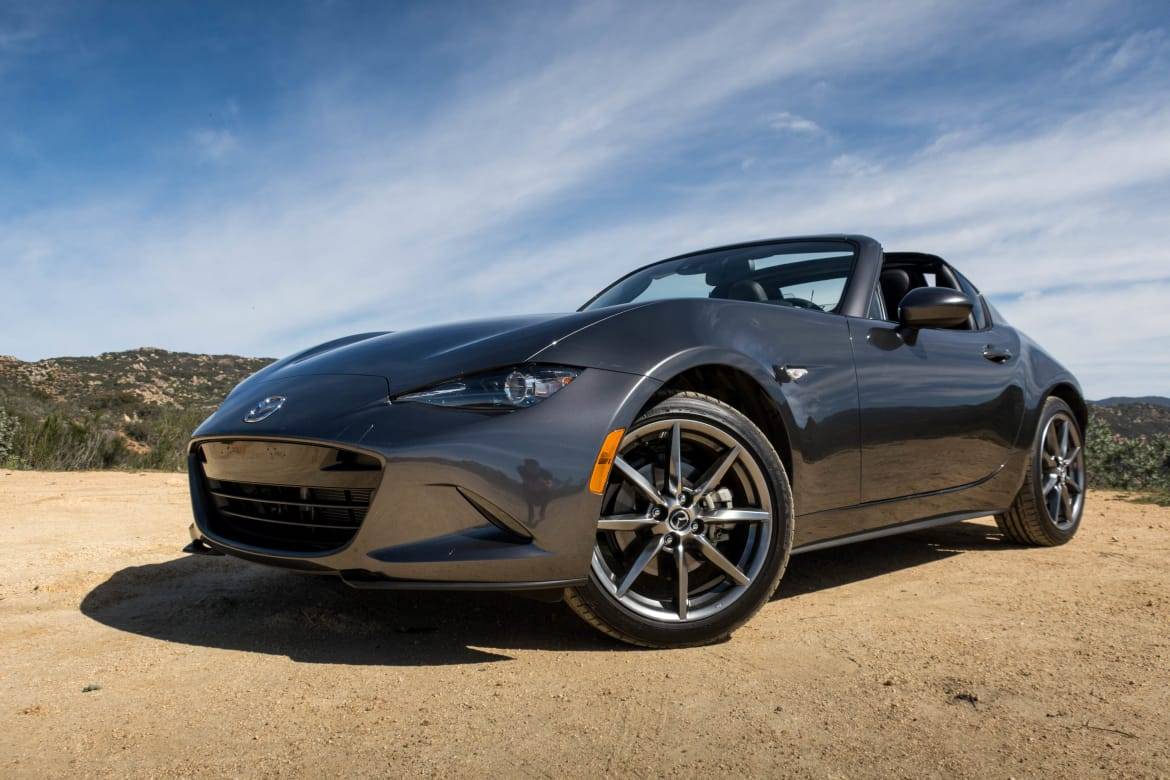
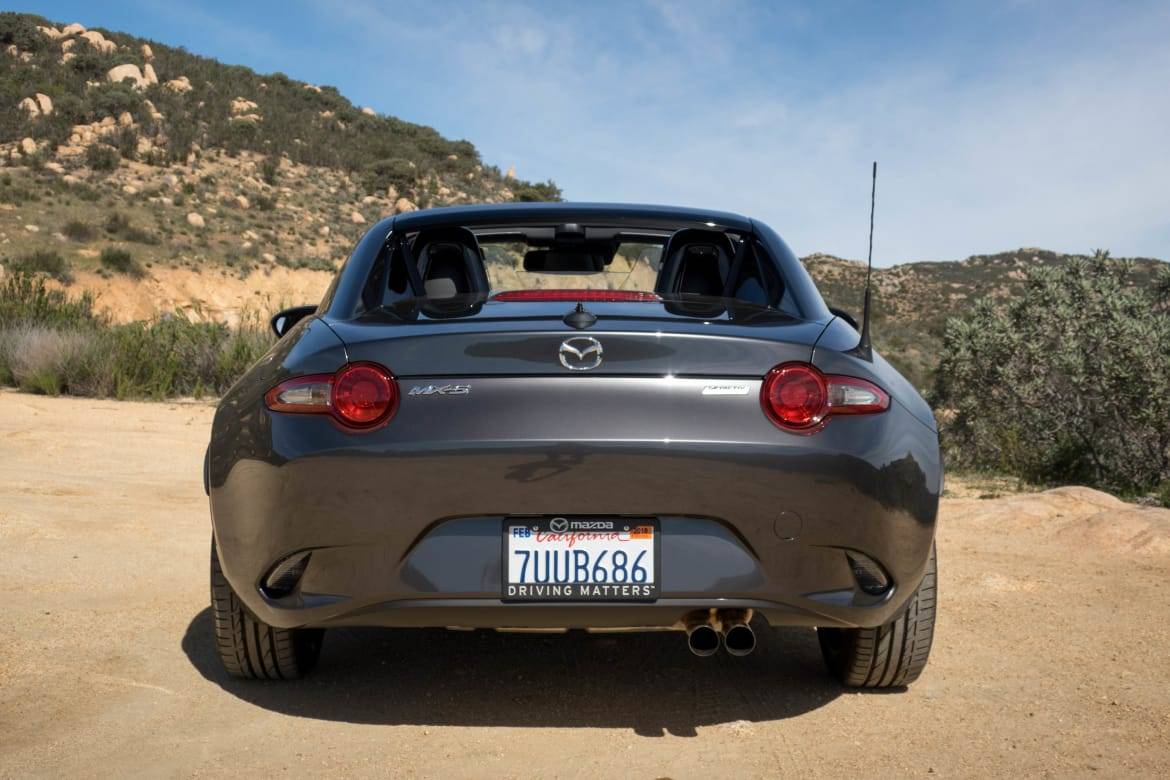










Former L.A. Bureau Chief Brian Wong is a California native with a soft spot for convertibles and free parking.
Featured stories












